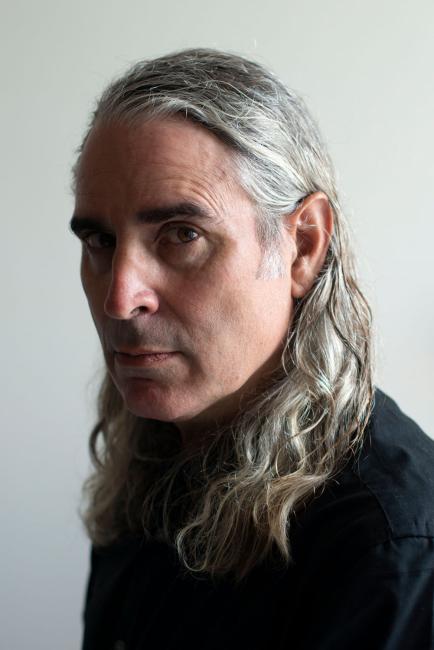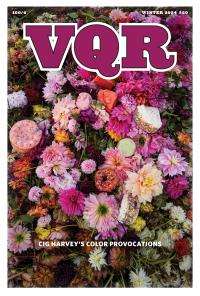
The Fog of War: Returning from Guantánamo
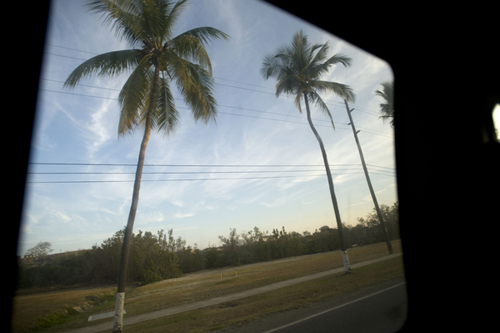
A view of palm trees out of vehicle driving through the Guantánamo Bay Naval Station. (Louie Palu / ZUMA Press)
My tour of the detention center at Guantánamo ended almost as soon as it began. It is difficult to photograph such a complex place in two days, no matter how much freedom you have to work, but under such restrictions I always leave feeling like I just got started. Usually on the ferry to the airstrip, I catch my mental breath and begin to reflect on all the photographs that I got and all that I missed. As a writer you can write later, as a photographer you can only visually report what you see in front of you. If you are not there, you can’t photograph it.
More and more, I have trouble separating my tours here from my years of experiences covering the front lines in Southern Afghanistan. That is the region where many of these detainees were trained and inspired and captured. The drumbeat of war in Afghanistan has headlines talking of yet another offensive in Kandahar, where I will be in about a week. The echoes of the Afghan war resonate within me with every step I take through the facility. When I look at my pictures it is easy to imagine some of these men carrying their Kalashnikovs and RPGs, shouting jihadi slogans at Tarnak Farms or another al Qaeda training camp. Alternatively, I can see these men innocently working fields and coming home to their families. I can switch again back to them making bombs, scarf wrapped around their face and head. Then again, see them mistakenly caught up in a sweep of an area during an offensive. What does a terrorist, militant, or insurgent look like? Who are they?
I have witnessed the capture of many detainees in Afghanistan—and seen both innocents and fighters detained. With the conflict escalating, it has and will get very confusing out there. Soldiers do their level best, but many times when questioning civilians in insurgent-held territory they have no idea who is who and what is what. Sometimes someone who seems friendly is, and sometimes he is setting you up for an ambush. The paranoia of that threat creates a difficult environment to work in and can lead to errors in judgment. Fear and uncertainty are filling the Afghan prisons.
The detainees I have come in close contact with betray the full range of human emotion—humor, curiosity, courtesy. Many but not all get pissed off having their pictures taken, as would anyone in a cage who has no choice in the matter. Some cover their faces or yell out, “No picture!” I have seen them jog past me with their shirt over their heads and raise their hands like a victorious boxer. I have seen them flash the peace sign, smile broadly, wiggle their toes in the window of their living quarters, and make funny faces as they pass me during a movement. One detainee asked for me to submit his photos to Maxim and FHM. There are some who are getting old and waddle around the camp, praying together as a group and socializing.
Some have been here almost a decade now—held in a country they never imagined visiting, a nation that nearly sparked a nuclear confrontation in 1962. It seems almost surreal after a day in the camps, surrounded by the faces of the detainees, to drive out and find yourself surrounded by palm trees and pressed by the Cuban heat. But, then, in a time of war many things seem one way and are really another. It takes a long time to comprehend what happens during a conflict and see through what the eighth US Secretary of Defense Robert McNamara called the “fog of war.”
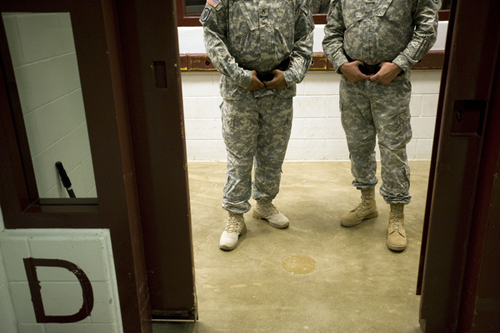
Camp 5 guards standing in the entrance to the spoke at the Guantánamo Bay Detention Facility. (Louie Palu / ZUMA Press)
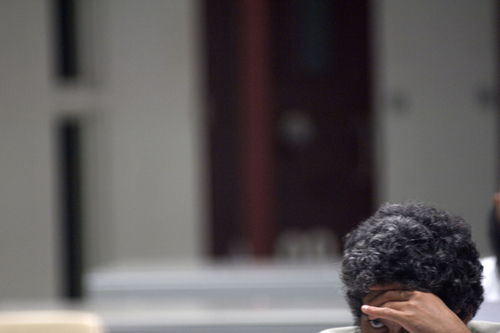
A detainee looks up to a teacher during a life skills class in Camp 6. (Louie Palu / ZUMA Press)
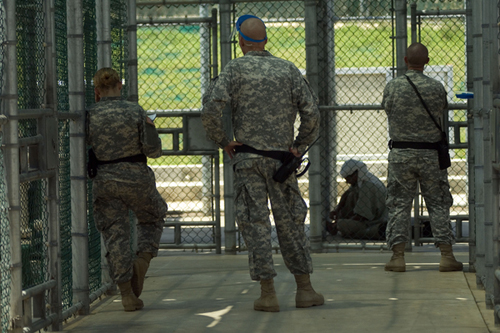
A detainee sits in the outdoor recreation area in Camp 5 watched by three guards. (Louie Palu / ZUMA Press)
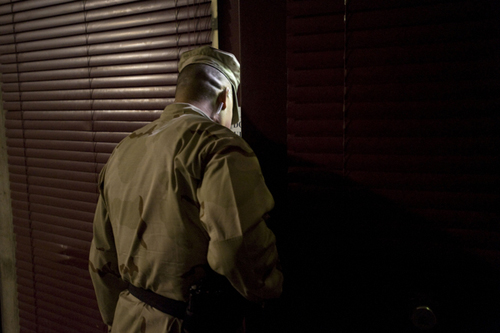
A Camp 6 guard looks into one of the pods where detainees are held. (Louie Palu / ZUMA Press)

